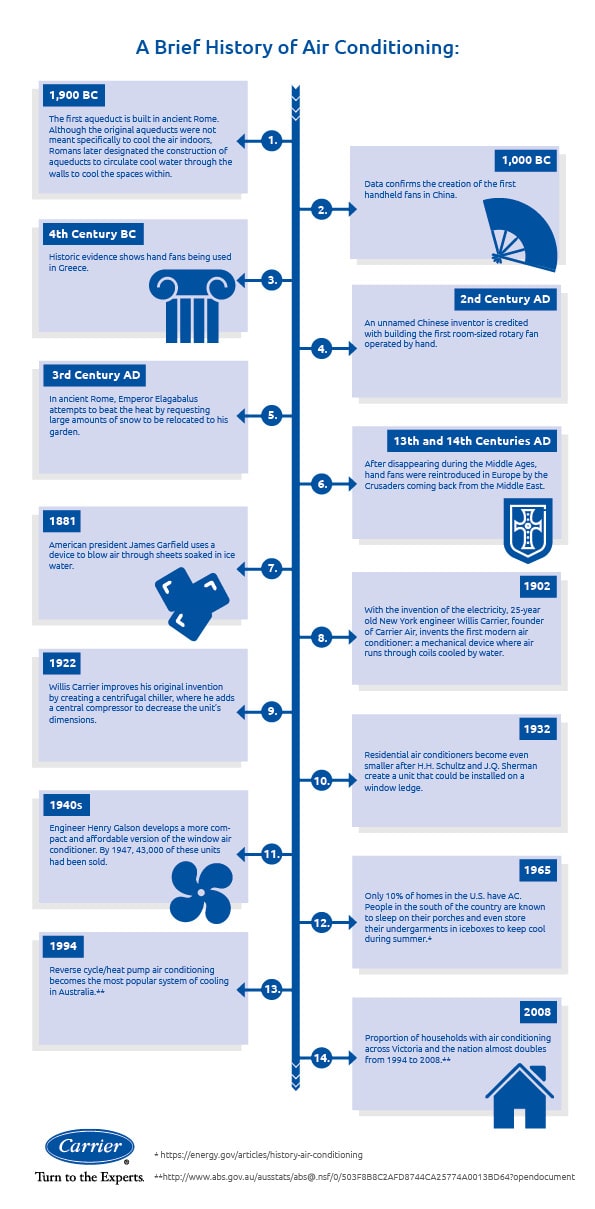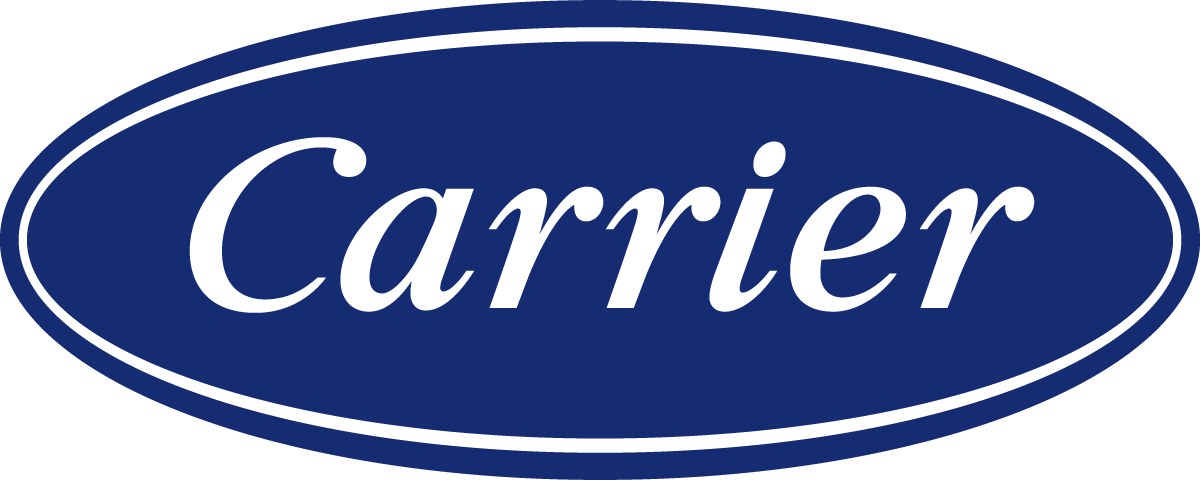What is an inverter air conditioner?
06.03.2018

Before going into the facts and figures of inverter technology and how it works, we must first take a brief stroll down history.
Once a luxury item owned only by the wealthiest families, throughout the decades the air conditioner slowly became the affordable, energy-efficient household staple of nowadays. Air conditioning units are widely used across the world and indispensable to cool homes, workplaces, hospitals, laboratories and many other places that are essential to daily life.
Like other technologies, the modern air conditioner is a product of a series of technological advancements made by those who simply wanted a better solution to solve their problems:

1,900 BC
The first aqueduct is built in ancient Rome. Although the original aqueducts were not meant specifically to cool the air indoors, Romans later designated the construction of aqueducts to circulate cool water through the walls to cool the spaces within.
1,000 BC
Data confirms the creation of the first handheld fans in China.
4th Century BC
Historic evidence shows hand fans being used in Greece.
2nd Century
An unnamed Chinese inventor is credited with building the first room-sized rotary fan operated by hand.
3rd Century
In ancient Rome, Emperor Elagabalus attempts to beat the heat by requesting large amounts of snow to be relocated to his garden.
13th and 14th Centuries
After disappearing during the Middle Ages, hand fans were reintroduced in Europe by the Crusaders coming back from the Middle East.
1881
American president James Garfield uses a device to blow air through sheets soaked in ice water.
1902
With the invention of the electricity, 25-year old New York engineer Willis Carrier, founder of Carrier Air, invents the first modern air conditioner: a mechanical device where air runs through coils cooled by water.
1922
Willis Carrier improves his original invention by creating a centrifugal chiller, where he adds a central compressor to decrease the unit’s dimensions.
1932
Residential air conditioners become even smaller after H.H. Schultz and J.Q. Sherman create a unit that could be installed on a window ledge.
1940s
Engineer Henry Galson develops a more compact and affordable version of the window air conditioner. By 1947, 43,000 of these units had been sold.
1965
Only 10% of homes in the U.S. have AC. People in the south of the country are known to sleep on their porches and even store their undergarments in iceboxes to keep cool during summer.*
1994
Reverse cycle/heat pump air conditioning becomes the most popular system of cooling in Australia.**
2008
Proportion of households with air conditioning across Victoria and the nation almost doubles from 1994 to 2008.**
Since the invention of modern air conditioners, the employment of higher efficiency standards in the industry has driven improvements to reduce energy costs as well as protect the environment from unnecessary waste and toxic chemicals.
This is why today, like other widely used technologies, air conditioners are at their most advanced form yet. And this is why inverter systems are so beneficial to both people and the planet alike.
What is inverter system technology?
Inverter system air conditioners are several steps ahead of their predecessors for they have been developed to eliminate once and for all the temperature oscillations and electricity waste of fixed speed systems. This improved technology uses flexible speed to attain complete control over the compressor for best performance.
How do inverter system air conditioners work?
Inverter systems start at full throttle to reach the desired temperature quickly and effectively. Once the climate is controlled, the operation is continually adjusted to retain temperature, without the variations of single speed air conditioners.
What are the advantages of inverter air conditioning systems?
Inverter air conditioners bypass the power surges of fixed speed systems, using between 30 and 50% less electricity on average, compared to older models.**
Our Carrier Air models also have a self-cleaning function, for easier maintenance and lower servicing fees, so your machine can withstand heavier use for longer. Plus, our intelligent variable speed drive produces a quiet operation, ideal for bedtime.
To benefit from this long list of features and beat the heat with economy, visit our website. Our Carrier Pearl range with DC technology will transform your home into a thermal oasis, whether you need an economic heating or cooling solution.
To find out more, call 13 COOL and speak with one of our experts.
